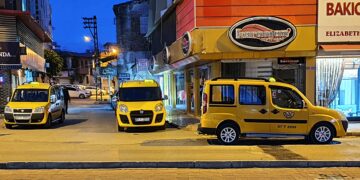There is a long-standing cooperation between the German Aerospace Center (DLR) and some taxi companies – but it’s not about business trips of employees. Since 2001, DLR successfully operates a number of taxi Floating Car Data (FCD) systems together with several taxi companies. This sophisticated name stands for a traffic detection system which allows quick and reliable measurement of the traffic situation.
 Geo- and time-referenced position data of taxis form the backbone of the system. Based on these raw data travel speeds for defined road seqments are calculated providing high-quality information on the prevailing traffic situation. The idea behind is as simple as it is clever. Taxis have a very high annual mileage within the urban areas. Also, they are typically equipped with digital radio which is an affordable solution for data transfer. Moreover, they move through the traffic flow in the same way as the vehicles in their surroundings.
Geo- and time-referenced position data of taxis form the backbone of the system. Based on these raw data travel speeds for defined road seqments are calculated providing high-quality information on the prevailing traffic situation. The idea behind is as simple as it is clever. Taxis have a very high annual mileage within the urban areas. Also, they are typically equipped with digital radio which is an affordable solution for data transfer. Moreover, they move through the traffic flow in the same way as the vehicles in their surroundings.
Each taxi is equipped with a Global Positioning System (GPS). Via existing digital radio or other radio technologies, e.g. General Packet Radio Service (GPRS), data like GPS position, time stamp, vehicle identification number (vehicle ID) and current operating status is transmitted to the taxi dispatch center in more or less regular intervals of 10-90 seconds. In an anonymous form this data is passed on to the researchers of the Institute of Transportation Systems at the DLR.
Anonymous form means that the ID given to the vehicle is fictitious and does not correspond to the real taxi ID. In addition, this identification number is replaced with…








